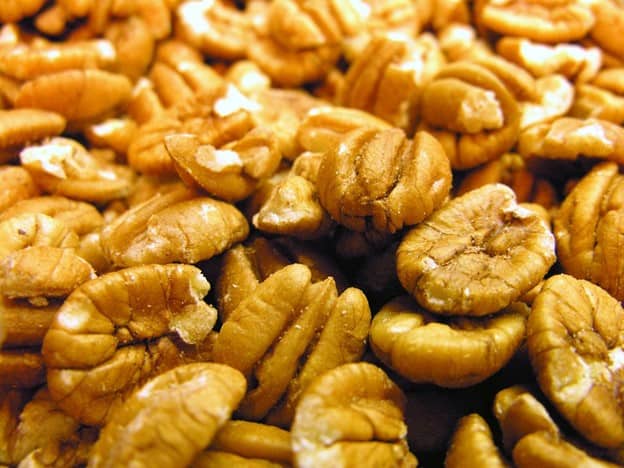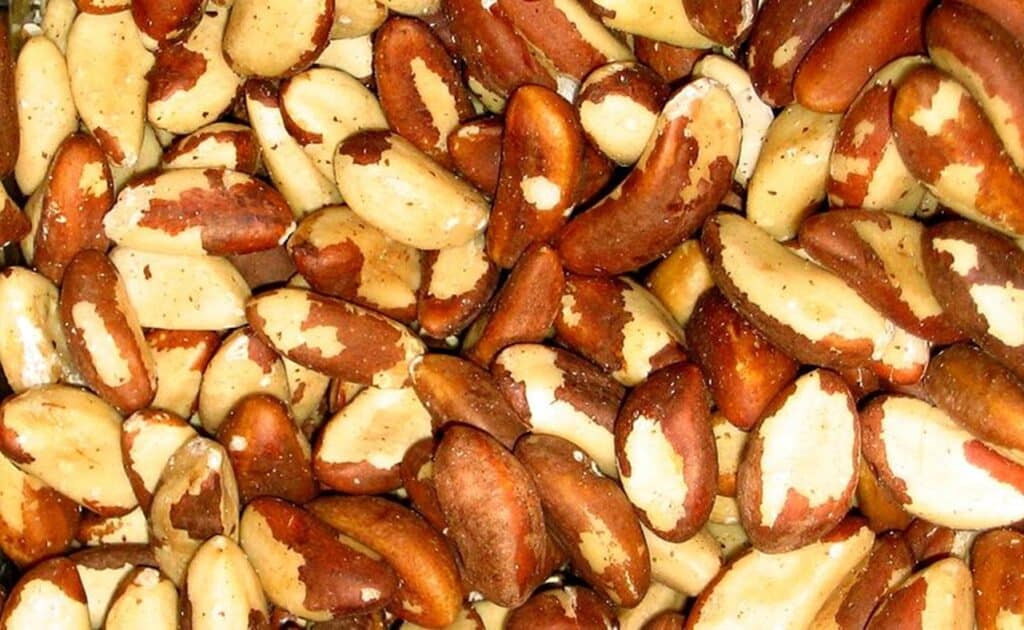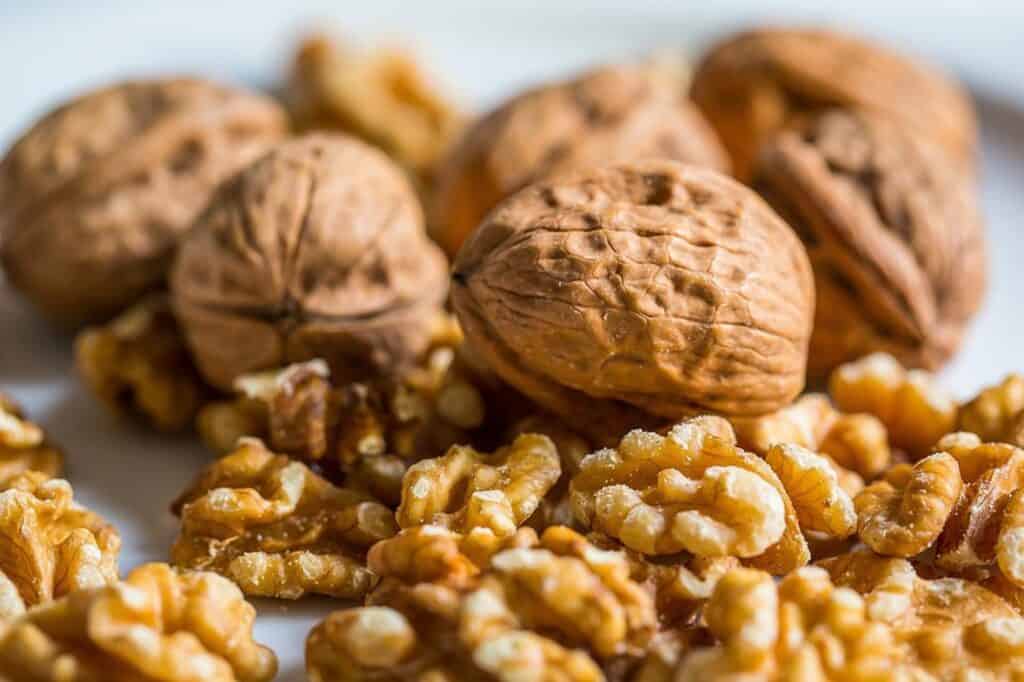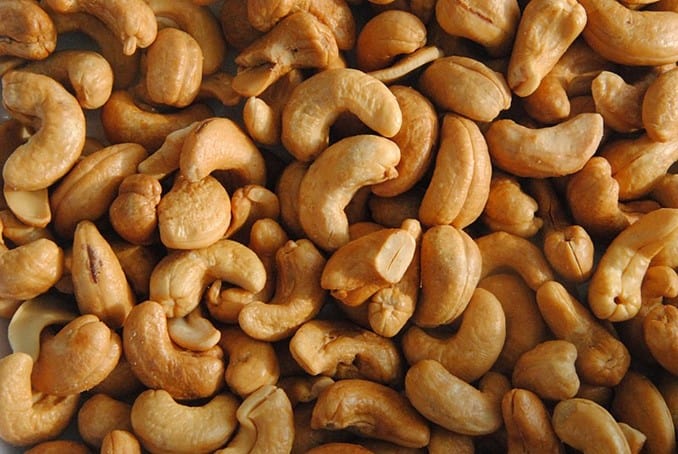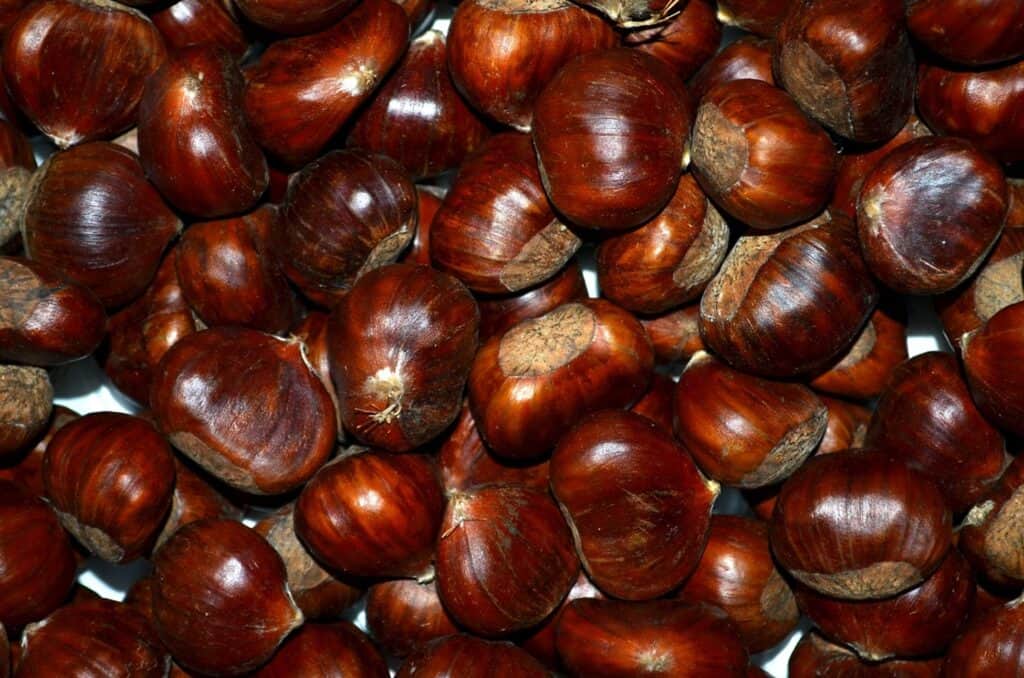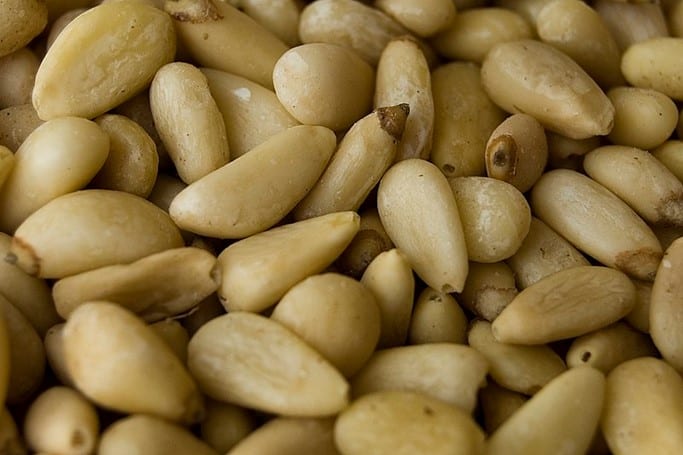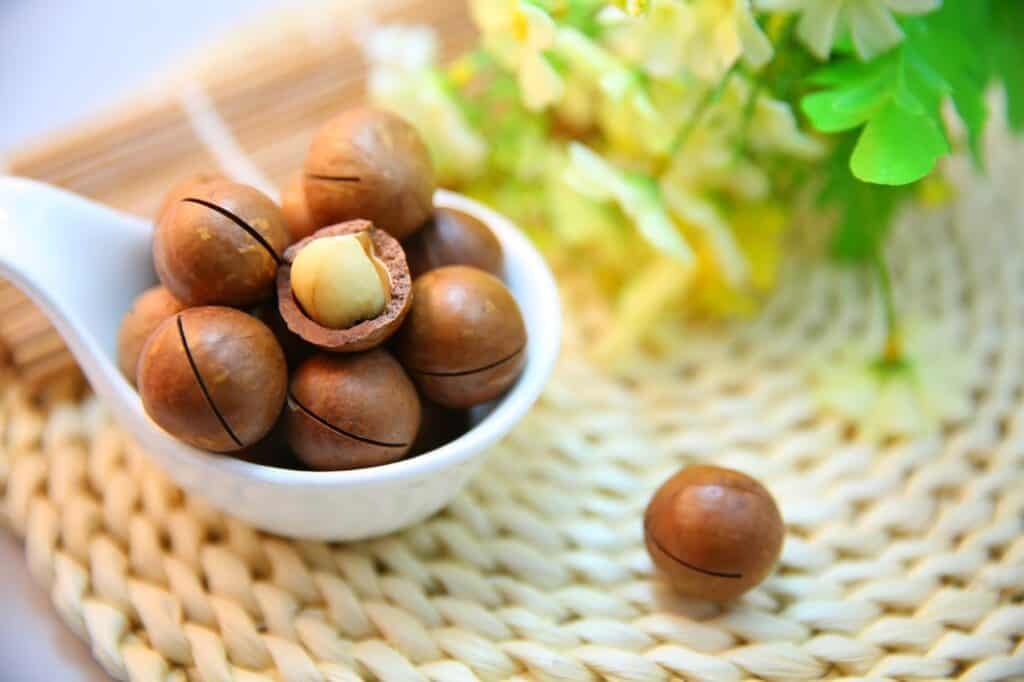5.3 million nuts are sold every year. While many of them are cheap, even the most popular nuts can be expensive health foods that get more expensive the harder they are to source, farm, and store. Continue reading to learn about the 8 most expensive nuts that money can buy.
- Pecans
- Brazil Nuts
- Walnuts
- Cashews
- Chestnuts
- Almonds
- Pine Nuts
- Macadamia Nuts
Region: Georgia, New Mexico, Texas
Tree height: 20-40 meters

photo source: Flickr
Pecan trees can grow up to 40 meters in height. Pecans aren’t sold in the shell – they have to be cleaned, sterilized, cracked, and deshelled. This process can be pricey, which is why pecans can be some of the more expensive nuts out there, costing as much as $7 per pound.
Pecans are known for nutrient-rich properties such as being high in phosphorus and magnesium. This makes them medicinally useful for lowering your risk for heart disease and improving your digestive health.
Pecan trees are very sturdy and frequently age up to 300 years. There are some at George Washington’s home in Virginia that were planted by him and are still growing!
Did you know?
Pecans are commonly known as nuts, but they’re actually something called a “drupe” or “stone fruit,” which is a little different. Drupes have soft outer parts and a pit inside. Inside the pit, is a fruit seed which in this case is the pecan.
Peaches and plums are common types of drupes. Other drupes commonly referred to as nuts include almonds and walnuts (see below).
Region: Brazil
Tree height: 50 meters

photo source: Wikimedia Commons
Brazil nuts are famous for being large, with some nutshells of this South American tree weighing over 4 pounds. The wood of the tree is just as famous as the nut, which is highly prized for use in construction projects with visible wood such as hardwood floors and other carpentry ventures.
The nut is in the Ericales plant family, which also includes blueberries and tea. The reason the nuts are rare and somewhat expensive is that they require a healthy amount of attention from bees to be pollinated naturally, without which the trees never grow the nuts.
Forests disturbed by natural or manmade causes tend to lose their bees, which in turn makes Brazil nut trees less fruitful (literally). Only the Brazil Institute of Environment and Renewable Natural Resources can authorize the cutting down of a Brazil nut tree.
Brazil nuts can cost as much as $7.30 per pound.
Did you know?
Brazil nuts are rich in a mineral called selenium, which is also found in water and soil. In edible forms, it is most often consumed in crab and fish. Selenium is a powerful antioxidant that can help your body manage inflammation and free radicals.
Region: Ontario, Florida, Texas
Tree height: 15 meters

photo source: Pixabay
Walnuts are some of the world’s most recognizable nuts, with those oversized ridged shells and bumpy nutmeat. There’s a huge Walnut Family Festival in California every year that celebrates the humble walnut. In fact, 75% of all the walnuts in the world are harvested from California.
Walnuts have a lot of purported medicinal properties, which include facilitating healing and reducing inflammation, probably due to their high Omega 3 fatty acid content.
There are 30 different breeds of walnut, so gauging the price can be difficult. But your standard high-quality walnuts in online retailers can sell for up to $7.94 per pound.
Did you know?
The walnuts are the oldest tree foods known to exist, with evidence of the walnut stretching back to 10,000 BC! The ancient Greeks used to call walnuts “karyon,” which is the Greek word for “head.” This is because the walnut shell looks kind of like a skull and the nut inside has grooves that are like hemispheres of the brain.
Region: India, West Africa
Tree height: 14 meters

photo source: Wikimedia Commons
The cashew nut is native to Brazil but also grows throughout parts of Asia. It’s a tropical evergreen tree with a pink and white blossom that eventually becomes the fruit and the familiar nut. Around 4 million tons of cashews get processed and sold every year.
In addition to being delicious and healthy, cashews contain oils that are commonly used in many different consumer products. These include waterproof paints, lubricants, and beauty products.
On the high end, cashews sell for up to $9 per pound.
Did you know?
Cashews contain a ton of copper, which helps your blood carry oxygen. They also have plentiful amounts of phosphorous, which helps you build better teeth and bones, and magnesium, which helps with energy. This has made them popular among health foodies and is another contributor to their high value.
Region: China, Italy, Portugal, Bolivia
Tree height: 10-60 meters

photo source: Pixabay
Chestnuts are in the beech family of trees, native to the Northern Hemisphere. They’re both the tree and the nut and are of course most famous for being roasted during the holiday season “on an open fire.” Their farming and processing costs, however, make them very expensive.
Chestnuts require a temperate climate and a lot of care while they’re still in the ground. They need deep soil, regular irrigation, and careful nutrition to produce nuts that are big and flavorful enough to sell.
They have a long shelf life, but they remain pretty expensive, as much as $11 per pound. Cheaper quality chestnuts can be obtained for as little as $4 per pound. The most common way to see chestnuts in the store is dyed red, salted, and roasted.
Did you know?
Chestnuts are very high in crucial vitamins and minerals, making them verge on being a “superfood” that health stores love to tout for medicinal benefits. These vitamins include potassium, calcium, iron, magnesium, zinc, and vitamin B.
Additionally, unlike many nuts, chestnuts are low in fat.
Region: Southwest Asia
Tree height: 4-10 meters

photo source: Wikimedia Commons
Almonds are some of the most famous nuts in the world. They originated as a species of tree that goes back to ancient times in the Levant area and can still be found in the wild in modern-day Iran. Almonds rely completely on bees to be pollinated, which means that almond growers rent bees to keep their crops healthy.
Almonds are well-known for their health benefits, including potentially regulating blood cholesterol levels and blood sugar, which can help those with heart disease and diabetes. Good-quality almonds can cost around $14 per pound.
Did you know?
Almonds are actually part of the plant genus, prunus, “drupes” rather than true nuts, which makes it more related to peaches than to other nuts. You could have figured this out on your own – just look at how much a peach pit looks like a big almond!
Region: China, Mongolia, Mexico
Tree height: 3-61 meters

photo source: Wikimedia Commons
Pine nuts are expensive due to the time required to grow and harvest them. 20 species of pine nut trees produce nuts, the most common being Colorado pinions, Mexican pinons, Italian stone pines, and Chinese nut pines. All these trees can take decades (15-25 years) to start seeing seeds.
Most pine nuts collected and sold in North America are wild pine nut trees that have to be harvested by hand from the pine cones of the trees. One of the issues is that the nuts are ready over a week before the pine cones open, so they must be picked apart by hand.
Pine nuts have a buttery, sweet flavor and are commonly toasted for salads and desserts. They cost $23 per pound.
Did you know?
To make the pine nut harvesting process easier, the cones get sun-dried in a burlap sack for 20 days, smashed, and picked for the nuts. It may be easier, but the process is no less time-consuming.
Region: Hawaii, Australia
Tree height: 9-12 meters

photo source: Wikimedia Commons
The most expensive nuts are macadamia nuts. They have a buttery flavor that makes them incredibly popular for desserts. Macadamia nuts are desirable and delicious, which drives prices. But the main reason they cost $25 or more per pound is the harvesting process.
There are ten different types of macadamia trees in the world, but only two of these tree species produce nuts and they don’t even start producing for seven to ten years after being planted. The nuts can’t even be picked – they have to be harvested from the ground after falling and then crushed with incredible pressure. They have the hardest shell of any nut in the world.
Macadamia nuts originated from Northeastern parts of Australia and were frequently gathered by the native aboriginal people there. They called macadamia nut trees “Kindal Kindal.” It was British colonists led by Dr. John Macadam that gave the trees their modern name.
Did you know?
Though they originated in Australia, the trees’ requirements for warm weather, plentiful rain, and nutrient-rich soil make Hawaii the best place in the world to grow them commercially. Hawaii along with South Africa and Australia are the world’s major producers of macadamia nuts. The freight costs from these countries contribute to their high prices.

